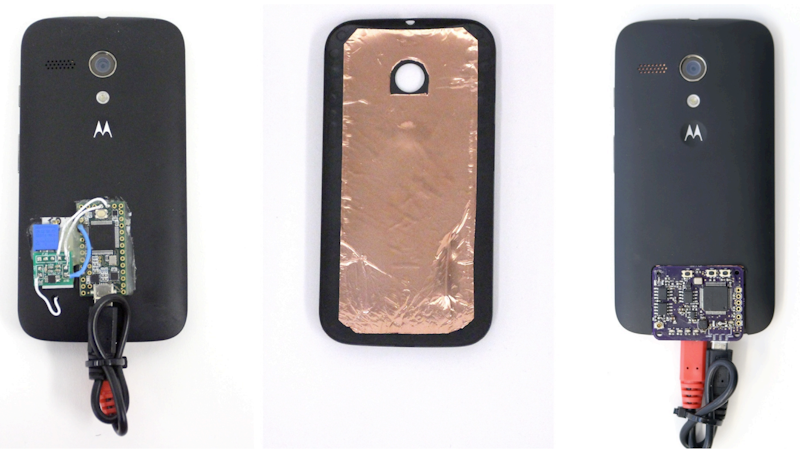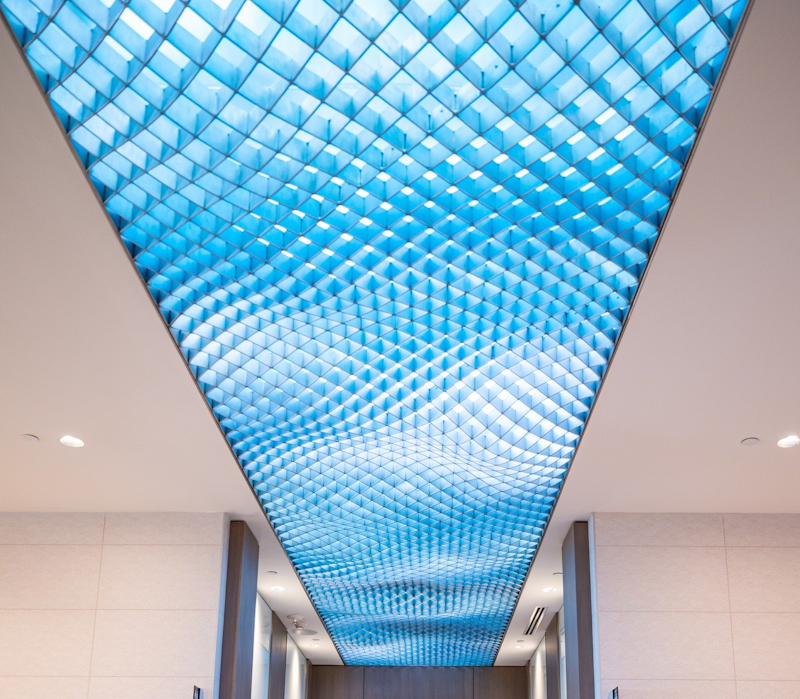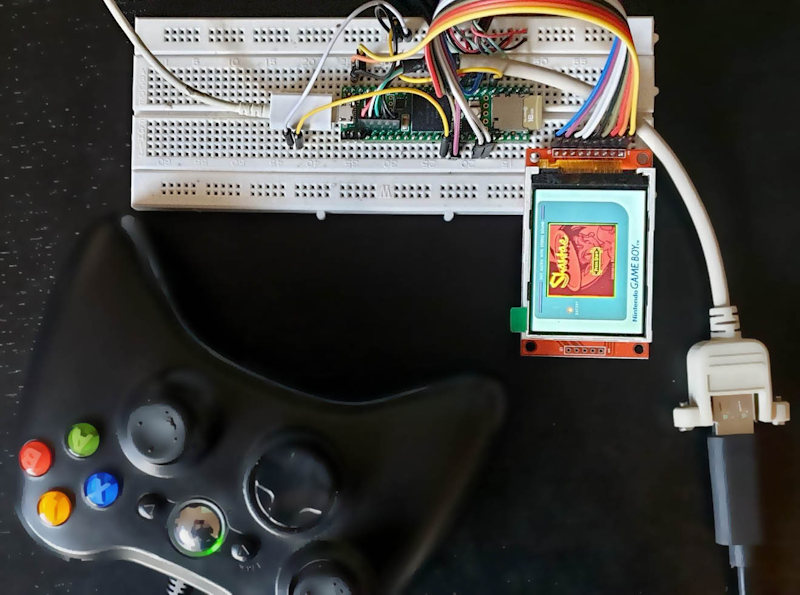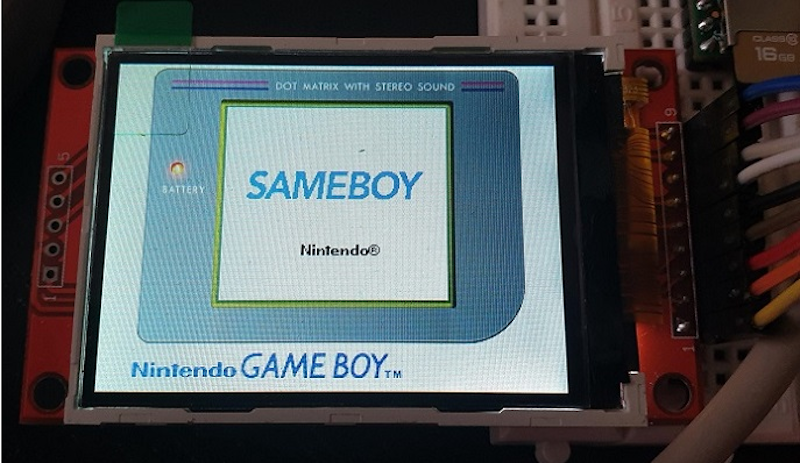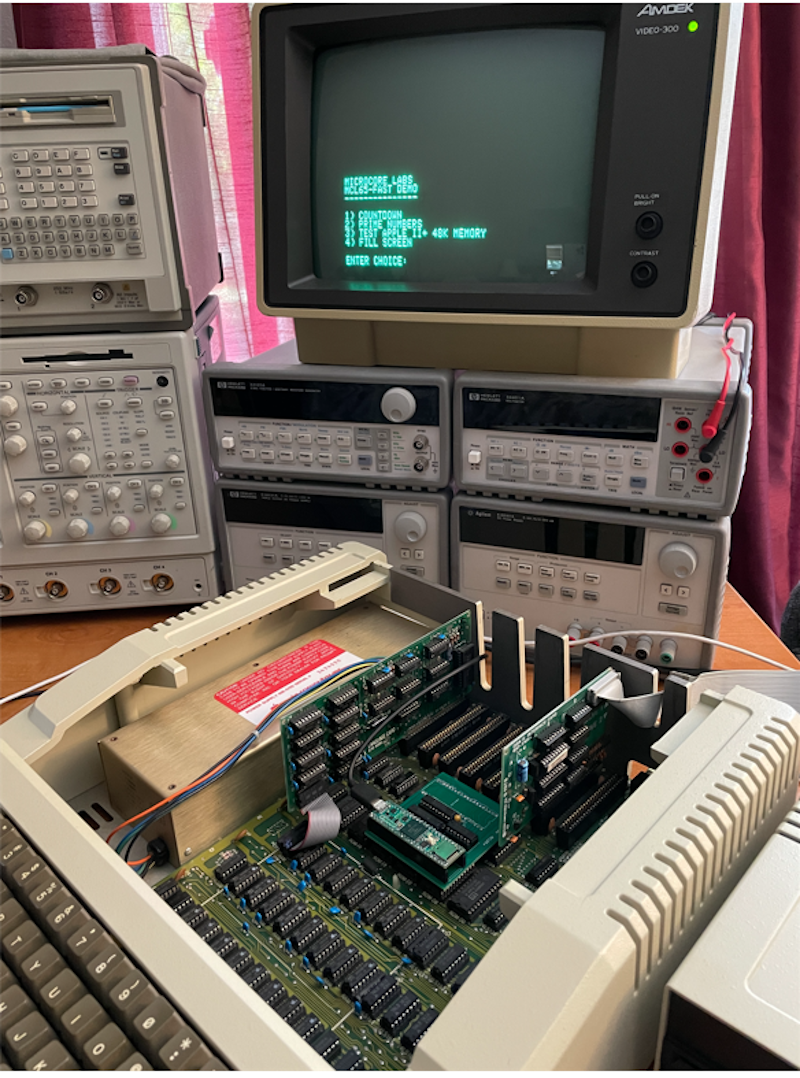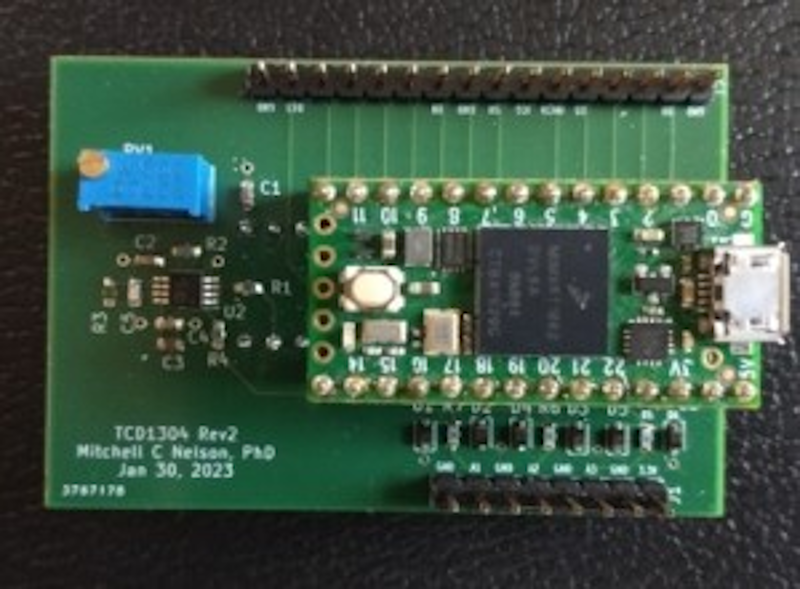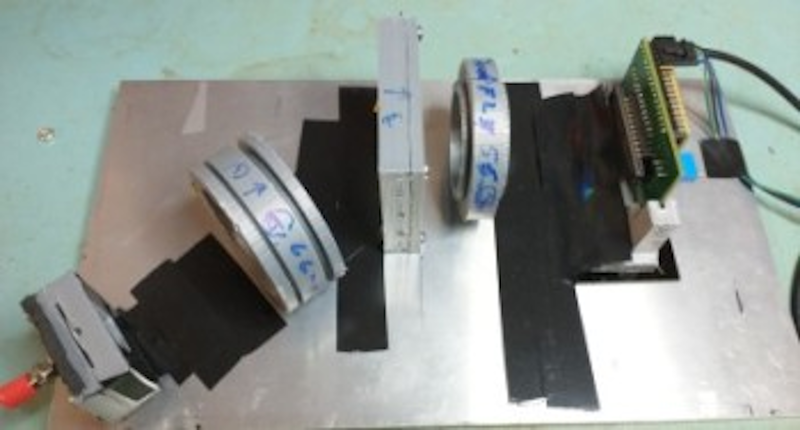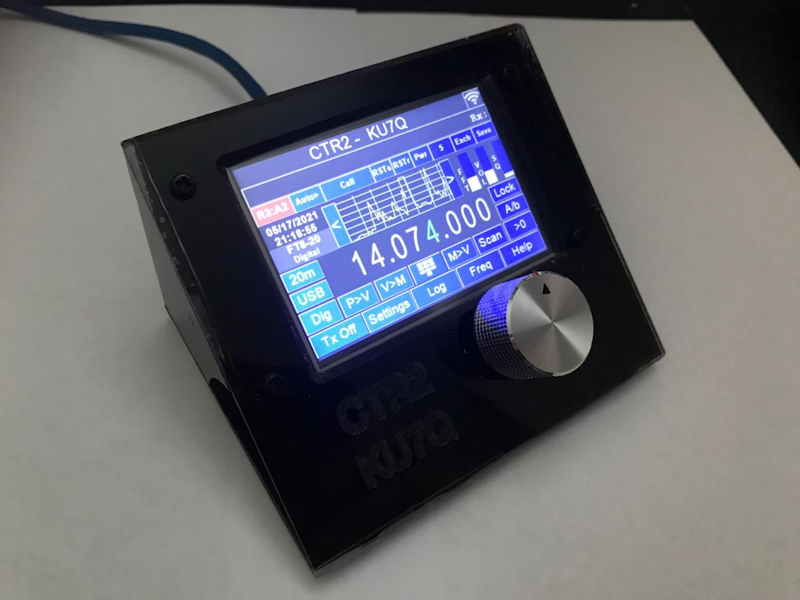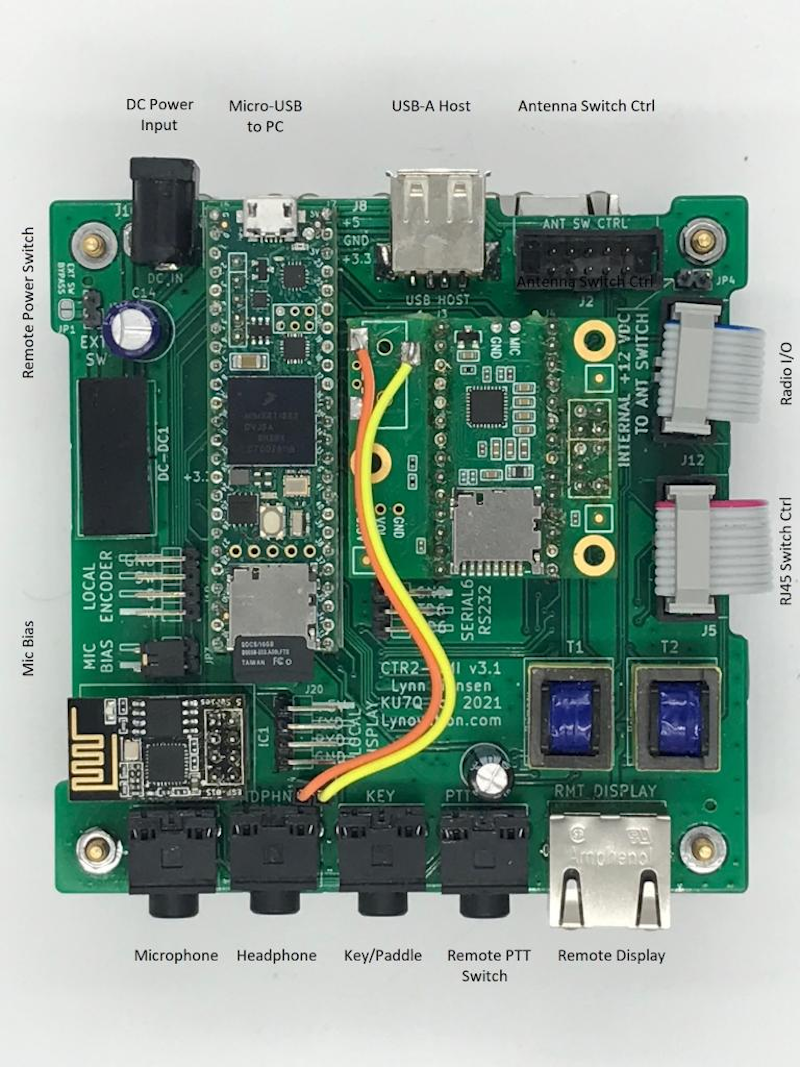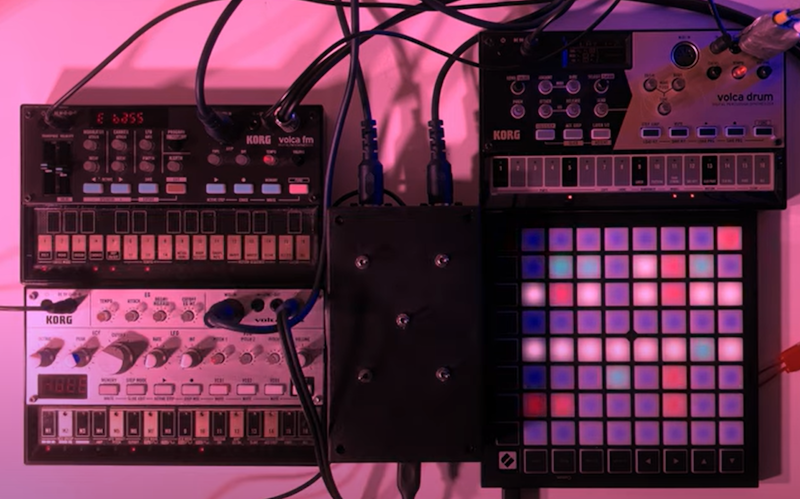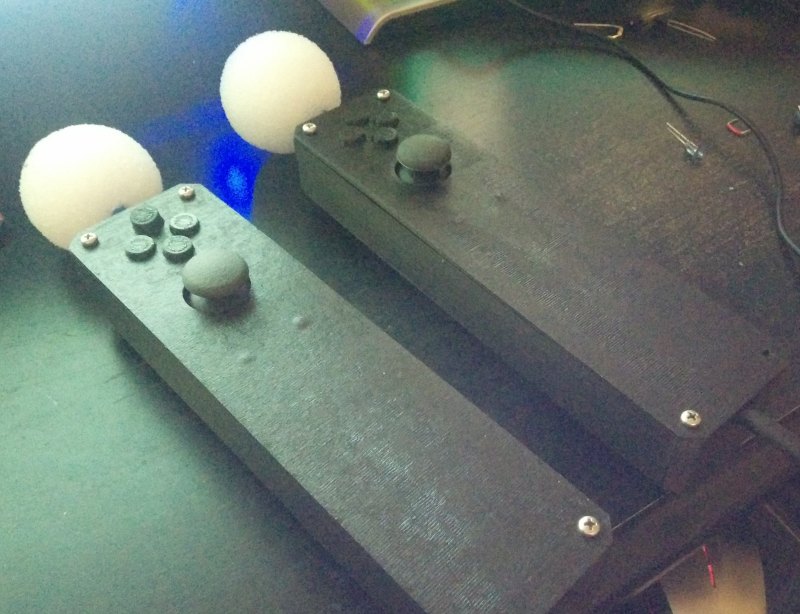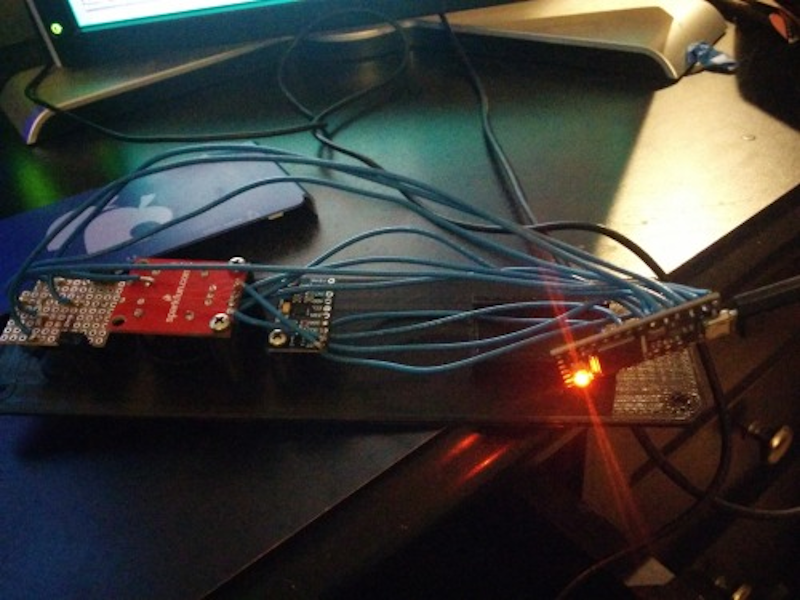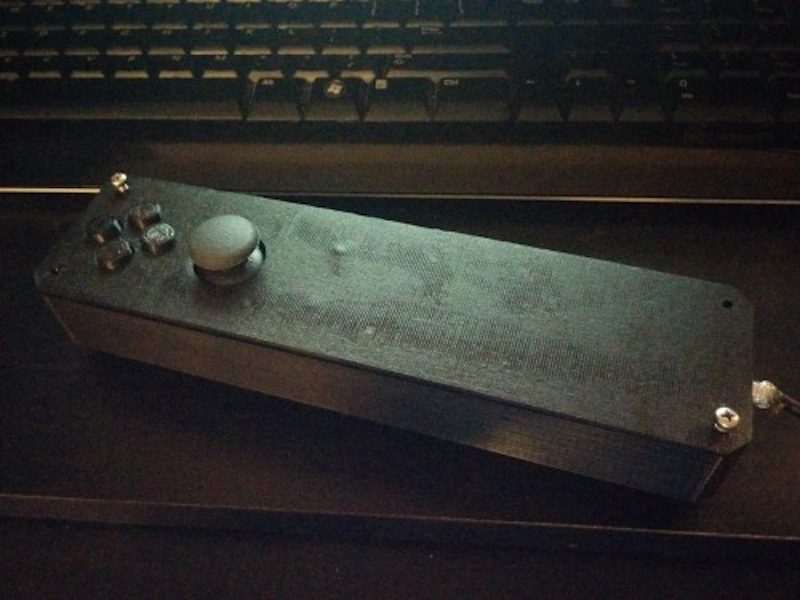The C-Thru Music AXiS-49 plug n play music interface was a velocity sensitive MIDI input device designed for composing and arranging music. Ben Glover’s Midihex is a new MIDI controller inspired by the AXiS-49, with 98 playing keys and an additional five function keys.
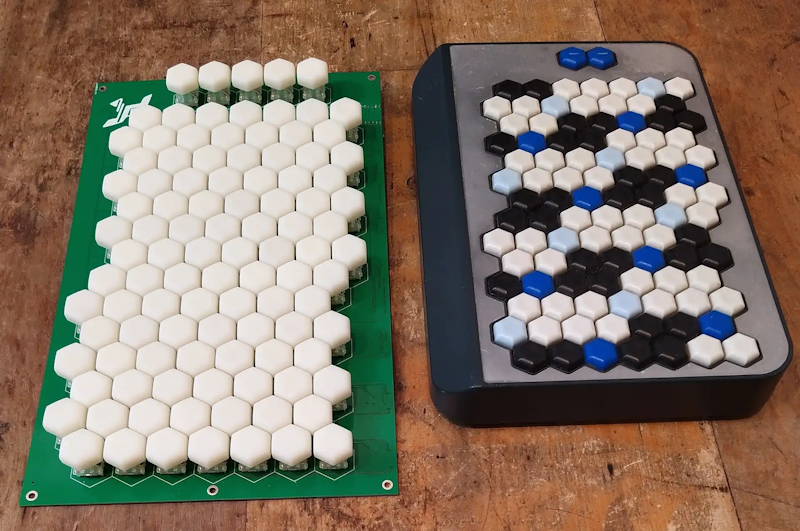
What the original device unique is the 49-note, 98-key harmonic table layout, which facilitates playing and composition along traditional interval sequences. Ben’s design uses Hall-effect sensors, enabling not just note velocity, but also the more expressive MIDI Polyphonic Expression (MPE), meaning timbre, pitch, amplitude, and other parameters could be modulated. The Midihex is based on the Teensy 4.1, with open-source firmware, allowing customization of the layout to use for example Wicki-Hayden, or microtonal scales such as Bohlen-Pierce or 31-TET. Find out more on the project’s web site, and see a demo in the video below.
